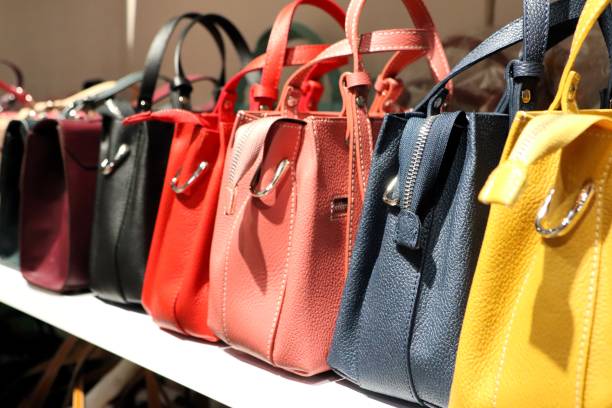Luxury Designer Bags Options And Prices In US For 2025
The luxury handbag market continues to evolve as we approach 2025, with designer brands introducing innovative collections while maintaining their heritage pieces. American consumers have shown resilience in the luxury accessories segment, with spending on high-end designer bags remaining strong despite economic fluctuations. The 2025 forecast indicates shifts in both design aesthetics and pricing strategies as luxury houses adapt to changing consumer preferences, sustainability concerns, and technological integration. Understanding the upcoming trends and price points can help fashion enthusiasts make informed decisions when investing in these statement accessories.

Current Trends in Luxury Designer Bags in US
The American luxury handbag landscape for 2025 shows several emerging trends. Minimalist designs with clean lines are gaining popularity among younger consumers who prefer versatile pieces that transition easily between casual and formal settings. Simultaneously, statement bags featuring bold colors and distinctive hardware continue to attract those looking to make fashion declarations. Sustainable luxury is perhaps the most significant shift, with many heritage brands incorporating eco-friendly materials and transparent production processes. Materials like regenerated nylon, plant-based leathers, and upcycled fabrics are becoming common in collections from established luxury houses that previously relied exclusively on exotic leathers and traditional materials.
Price Range of Luxury Designer Bags in the US Market
The price spectrum for luxury designer bags in the US market continues to widen for 2025. Entry-level designer pieces from prestigious brands now typically start around $1,500-2,500, representing an approximate 8-10% increase from previous years. Mid-range signature bags from brands like Louis Vuitton, Gucci, and Prada generally position between $2,500-5,000, while high-end statement pieces and limited editions from brands such as Hermès, Chanel, and Bottega Veneta command prices from $5,000 to well over $30,000. The ultra-luxury segment has seen particularly significant price adjustments, with some heritage pieces increasing by 15-20% annually as brands position these items as investment pieces rather than mere accessories.
Emerging Designer Brands to Watch in 2025
While established luxury houses maintain their market dominance, several emerging designer brands are gaining recognition in the US luxury handbag market for 2025. Labels like Coperni, Khaite, and Savette have carved distinctive niches with innovative designs at relatively more accessible price points (typically $800-2,000). These brands appeal particularly to younger luxury consumers seeking unique aesthetics and narratives beyond traditional status symbols. Additionally, designer collaborations between established houses and contemporary artists, architects, or digital creators are anticipated to create limited-edition collections that blur the boundaries between fashion and other creative disciplines, often commanding premium prices due to their exclusivity and cultural relevance.
Investment Value of Designer Bags in 2025
The investment potential of certain luxury handbags continues to be a significant factor for American consumers approaching 2025. Historical data shows that specific models from brands like Hermès, Chanel, and Louis Vuitton have consistently appreciated in value, often outperforming traditional investment vehicles. The secondary market for pre-owned luxury bags remains robust, with platforms like Rebag, The RealReal, and Fashionphile reporting strong demand. Limited-edition pieces, discontinued classics, and bags in rare colorways typically command the highest resale premiums, sometimes reaching 150-200% of their original retail prices. However, market experts caution that not all designer bags will appreciate, making research into brand heritage, production numbers, and historical demand patterns essential for those approaching handbag purchases as investment opportunities.
Comparative Analysis of Luxury Designer Bag Prices for 2025
The following table presents a comparative analysis of projected price ranges for signature bags from major luxury brands in the US market for 2025, based on current pricing strategies and anticipated adjustments:
| Brand | Entry-Level Model | Price Range | Signature Model | Price Range |
|---|---|---|---|---|
| Hermès | Herbag Zip | $2,800-3,500 | Birkin 25 | $10,000-38,000 |
| Chanel | Small Wallet on Chain | $2,900-3,500 | Classic Medium Flap | $9,500-10,500 |
| Louis Vuitton | Pochette Accessoires | $1,500-1,800 | Neverfull MM | $2,500-3,000 |
| Gucci | Small Shoulder Bag | $1,800-2,200 | Dionysus Medium | $2,800-3,500 |
| Prada | Re-Edition 2000 | $1,500-1,800 | Galleria Medium | $3,200-3,800 |
| Bottega Veneta | Mini Pouch | $2,000-2,500 | Jodie Medium | $4,200-4,800 |
| Loewe | Small Puzzle | $2,800-3,200 | Medium Puzzle | $3,500-4,000 |
| Celine | Teen Triomphe | $2,800-3,200 | Classic Medium | $4,000-4,500 |
| Dior | Saddle Card Holder | $490-700 | Medium Lady Dior | $5,900-6,500 |
| Balenciaga | Neo Classic Mini | $2,000-2,400 | City Medium | $2,590-2,950 |
Prices, rates, or cost estimates mentioned in this article are based on the latest available information but may change over time. Independent research is advised before making financial decisions.
Technological Integration in Designer Bags for 2025
Innovation through technology is increasingly influencing luxury handbag design for 2025. Several premium brands are incorporating tech elements like NFC chips for authentication and consumer engagement, built-in chargers, and LED lighting in bag interiors. Louis Vuitton’s experimentation with flexible digital displays embedded in certain bag models represents one of the more futuristic approaches, while other brands are focusing on material innovations like climate-adaptive textiles and advanced wear-resistant treatments. These technological enhancements often carry premium pricing, with tech-integrated models typically commanding 15-30% higher prices than their conventional counterparts. The integration of technology also extends to the shopping experience, with augmented reality allowing consumers to virtually try bags before purchasing and blockchain technology ensuring authenticity throughout the product lifecycle.
The luxury handbag market in 2025 presents American consumers with diverse options across various price points, designs, and technological innovations. While heritage brands continue to dominate through their established reputation and investment value, emerging designers and sustainability-focused collections provide alternatives for different consumer segments. As prices continue their upward trajectory, especially for iconic models, many fashion enthusiasts are approaching luxury handbag purchases with greater strategic consideration, balancing immediate aesthetic appeal with potential long-term value retention.




